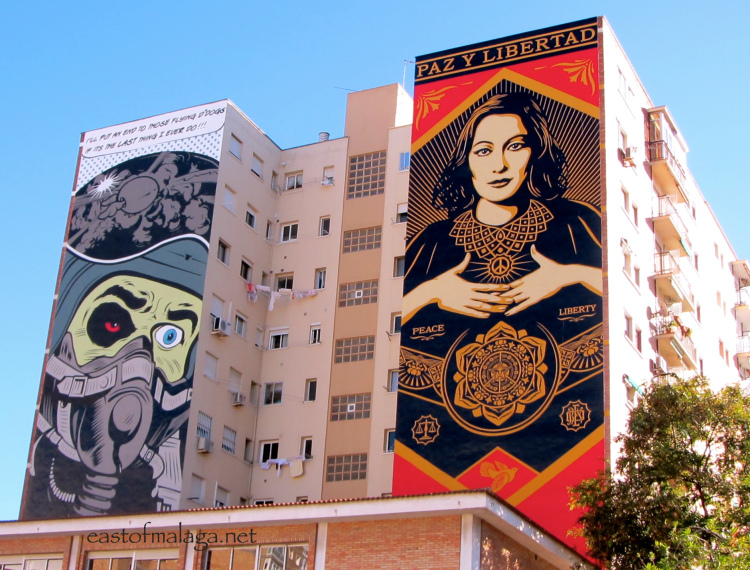 photo courtesy of East of Malaga
photo courtesy of East of Malaga
Something’s happening out in the street, and in the SOHO district of Málaga, it’s street art. From doorway size paintings to seven-storey high murals, post-graffiti artworks are appearing on walls all over the SOHO district of Málaga.
But why there, and why now? Soho is the triangular shaped neighbourhood sandwiched between the Alameda, the port and the river like a wedge of cheese. In the nineteenth century it was a prosperous middle class suburb (and still has some very fine buildings from this time), but over the last fifty years has become increasingly run down, missing out on the kind of urban renewal that first the new city centre, and later the historic centre, benefited from.
 photo courtesy of azahar-sevilla.com
photo courtesy of azahar-sevilla.com
Partly because the new Contemporary Arts Centre was located there in 2003, the initiative to regenerate the area that was launched six years later revolved around making it the artistic centre of the city, and was backed by both the city council and private funds. Some of the artworks that have been created by both local and “guest” artists as a result are certainly impressive and colourful. Among the best known contributors are the UK’s Dean Stockton (D*FACE) and America’s Frank Shepard Fairey (OBEY), who created the two big seven-storey high murals behind the CAC, and Belgium’s ROA, whose chameleon and tumbling rats seem to be among everybody’s favourites, as well as Dal East from China. Local artists include emerging talents Jose Luis Puche and Dadi Dreucol. The brightly coloured graffiti-style art has certainly made the area more interesting – and attracted tourists and their money. It will be interesting to see how successful the strategy is in the long term, and whether it revitalises the local community.
 photos courtesy of azahar-sevilla.com
photos courtesy of azahar-sevilla.com
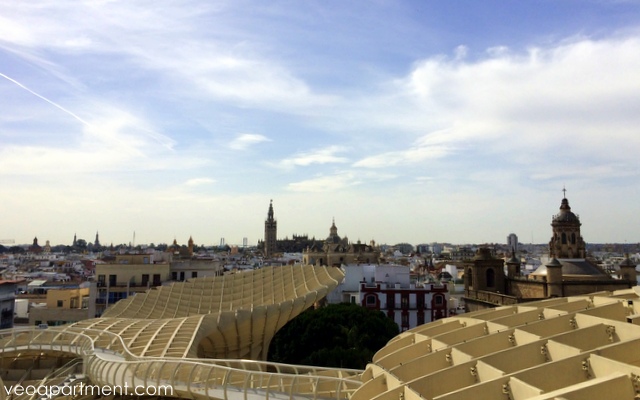
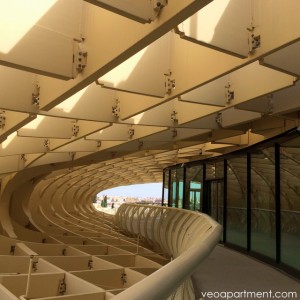 But it was all worth it in the end. The first time you see them is definitely one of those “Wow!” moments. Said to be the largest wooden structure in the world, it swoops and arches above you like, well, a giant mushroom. But it’s functional, too. At ground level, as promised, is the Encarnación market, back in its rightful home after a break of 37 years, with shops and bars alongside. The roof of the market provides an open space for public events, especially the Christmas fair, world cup finals on the big screen, and occasional concerts. Below ground-level is the Antiquarium, the museum that houses the Roman ruins, which have been carefully restored and are a must-see for anyone with an interest in history. From there you can also take the lift up to the top. The walkways give you a great view of the surroundings, and you can enjoy a drink and a tapa at the Gastrosol bar complex.
But it was all worth it in the end. The first time you see them is definitely one of those “Wow!” moments. Said to be the largest wooden structure in the world, it swoops and arches above you like, well, a giant mushroom. But it’s functional, too. At ground level, as promised, is the Encarnación market, back in its rightful home after a break of 37 years, with shops and bars alongside. The roof of the market provides an open space for public events, especially the Christmas fair, world cup finals on the big screen, and occasional concerts. Below ground-level is the Antiquarium, the museum that houses the Roman ruins, which have been carefully restored and are a must-see for anyone with an interest in history. From there you can also take the lift up to the top. The walkways give you a great view of the surroundings, and you can enjoy a drink and a tapa at the Gastrosol bar complex.

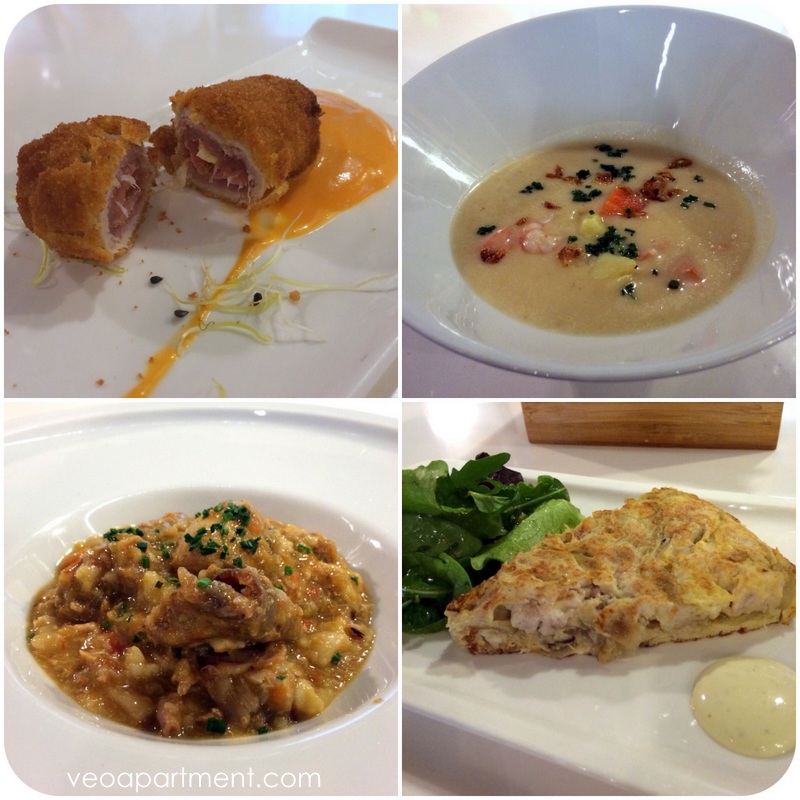
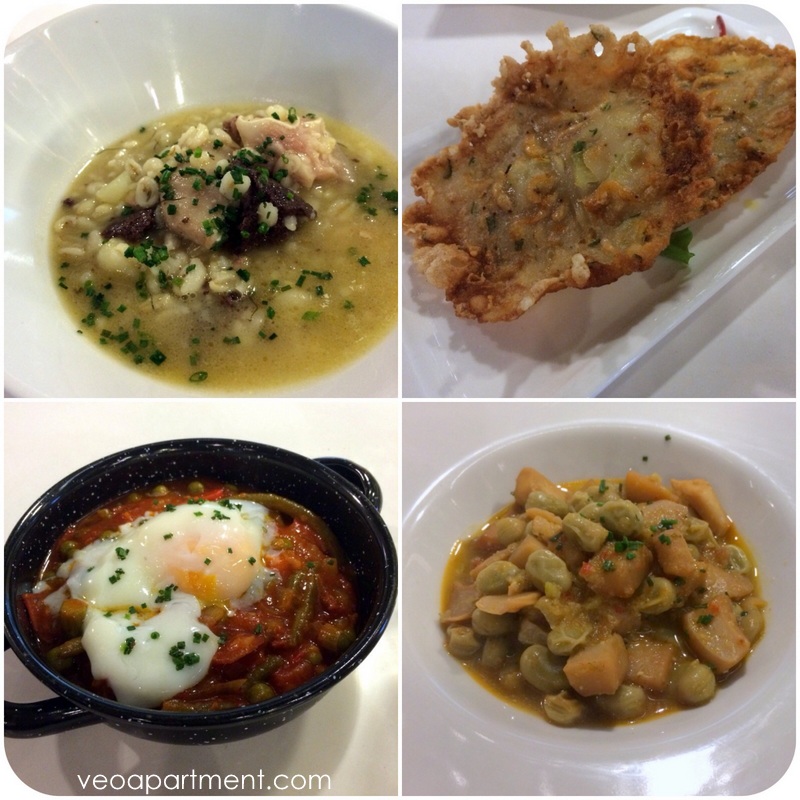

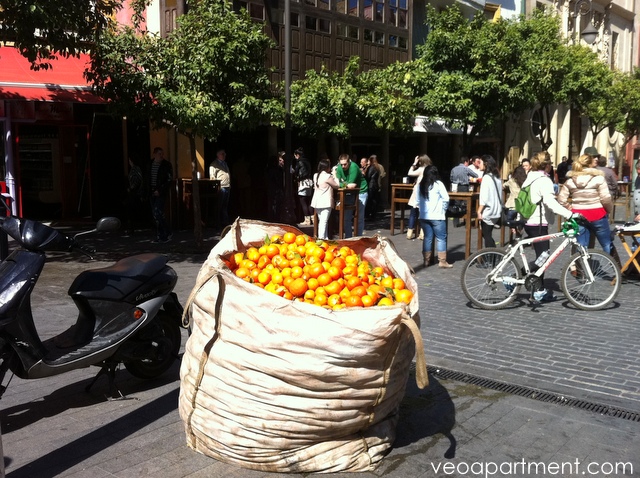 orange harvest in Plaza del Salvador
orange harvest in Plaza del Salvador